
How to Be a Youth Activist: Five Ideas for Getting Started
Activism isn’t just about what you’re for or against. It’s about discovering what you’re passionate about, your opinions on issues and learning more about policies and perspectives you weren’t aware of before. But most importantly, it’s about having these conversations with others, even when it’s difficult.
Young people know this and that’s why youth activism is important — they’re ready and willing to make positive change happen in their communities, country and the world.
Why Youth Activism Matters (and Works!)
Teenagers are excellent advocates — they’re passionate, idealistic and not afraid to stand up for what they think is right. They’ve been the beating heart behind many social movements — from marching for Civil Rights in the 1960s to generating awareness and support for the #MeToo movement. While youth activists still utilize traditional tactics like peaceful protesting, they’re also adept at harnessing modern tools like social media to express opinions and mobilize communities.
In fact, in a recent survey of teens, Boys & Girls Clubs of America found that most teens get their information about social issues from social media and friends. They also ranked racial justice, women’s rights and LGBTQ+ issues as their top social issues with gun control, climate change and police and criminal justice following closely behind.
Through adult mentors and community outreach, youth at Boys & Girls Clubs learn how to represent their own views and interests and get involved in issues that will shape the rest of their lives. They also learn valuable leadership skills like goal setting, teamwork and conflict resolution to help overcome any obstacle that comes their way.
The benefits of teen activism are real, and with the right skills and opportunities, teens can be motivated to stand up to issues affecting themselves, their loved ones and their communities. And their impact shows! Around the world, youth activists have been responsible for public policy changes, civic engagement and positive strides in mental health.
That’s why when young people come together to champion a cause they believe in, it’s not a question or “if” they’ll make a difference; it’s a question of “when.”
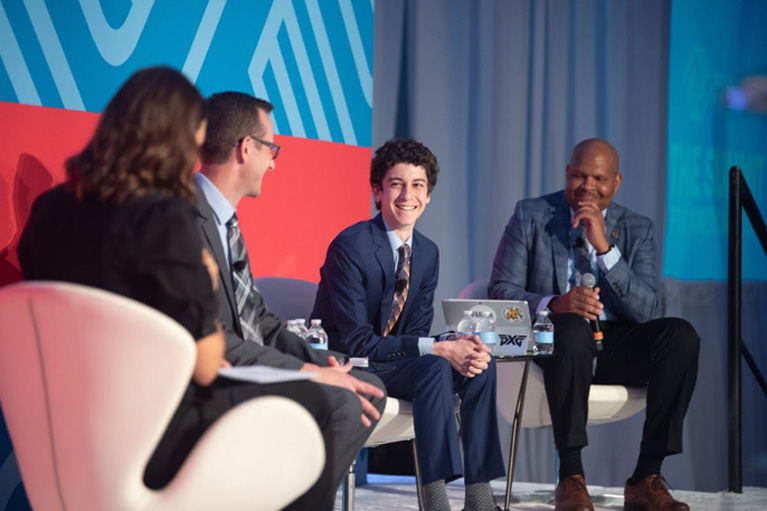
Five Tips for Becoming a Teen Activist
If you’re a young person interested in social justice, or know one that you want to support, here are a few tips for getting started as an advocate no matter your experience level:
-

Find a Cause You Care About
Think about it: what would you like to improve in your community? What’s creating challenges? How would responding to it create a positive change? Once you’ve zeroed in on a cause, you can start to learn more about it and create a plan of action for tackling it. -

Do Your Research
The more you know about the cause you’re passionate about, the more effective you’ll be as an activist. Go online or visit the library to read up on the issue your cause seeks to address. You can also talk to people who are directly impacted by the issue to examine how it affects your community and others. -

Team Up with Others
Activism is stronger when multiple voices are raised! Join other young activists in community organizing for your cause or start your own dedicated committee. Use technology to stay connected and accountable and let members shine by assigning them as leads on projects that play to their strengths and interests. -

Tap into Your Passions
A passion can be a skill, a talent or an interest — and they can be powerful tools in advancing your cause. Your advocacy is what you make it — so get creative! If you’re into fashion, start a clothing line that raises funds for an organization that aids survivors of human trafficking. If you’re an artist, work with local leaders or businesses to paint an outdoor mural that stands up to discrimination. Unleash your creativity — it might just lead to the next big moment in your movement. -

Don’t Give Up
Change takes time and effort. There will be roadblocks, but if you’re persistent, you CAN make a difference in your school, your state, your country and even the world. So, don’t give up on your cause, because even the smallest change can help more people feel valued and heard.
Five Examples of Youth Activism Projects
Looking for ways to get your cause seen and supported? Check out these youth activism examples put into action by Boys & Girls Club teens.
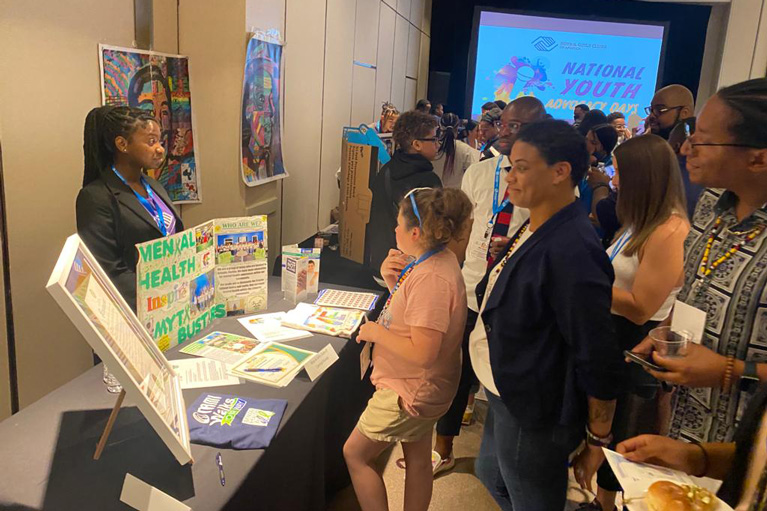 Image courtesy of Boys & Girls Clubs of Central Florida.
Image courtesy of Boys & Girls Clubs of Central Florida.
Recruit Your Peers
Forming a teen advocacy group or club can allow you to cover more ground by creating events and speaking opportunities and working as a team to achieve your goals.
To combat mental health stigmas, teens at Boys & Girls Clubs of Central Florida created the Mental Health Myth Busters advocacy group. Together, they visit Boys & Girls Clubs, schools and community events to host mental health awareness seminars, suicide prevention workshops and train their peers to become Teen Mental Health First Aiders. They even worked with their local government to get a proclamation for May 11 to become Teen Mental Health Awareness Day in central Florida!
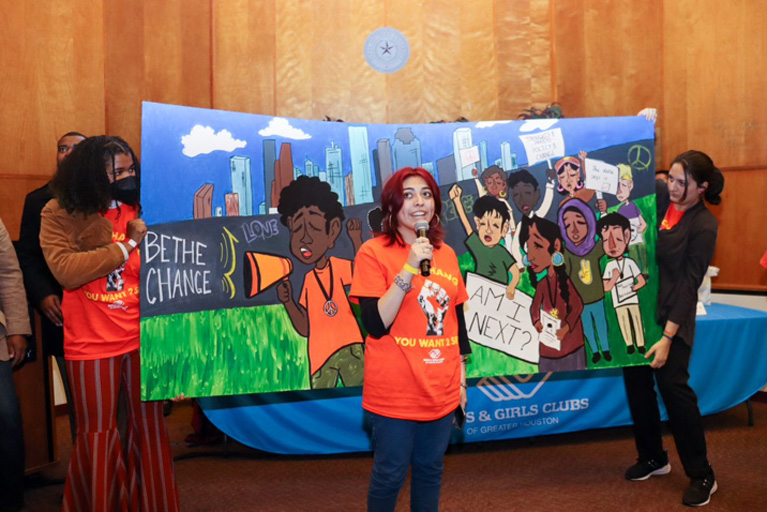 Image courtesy of Boys & Girls Clubs of Greater Houston, 2023 Diversity, Equity and Inclusion Club Honor Award winner.
Image courtesy of Boys & Girls Clubs of Greater Houston, 2023 Diversity, Equity and Inclusion Club Honor Award winner.Engage Community Leaders
From the school district to local government, many officials are looking to hear from today’s teens and partner with them on initiatives that better the community.
In response to George Floyd’s murder, teens from Boys & Girls Clubs of Greater Houston partnered with their local school district to develop an anti-violence campaign, giving them a safe space to express how violence impacts their schools and communities using digital media, art and creative writing. They also led an anti-gun violence event and workshops to discuss gun violence and racial justice with key decision-makers in their region, even engaging feedback and support from First Daughter Ashley Biden.
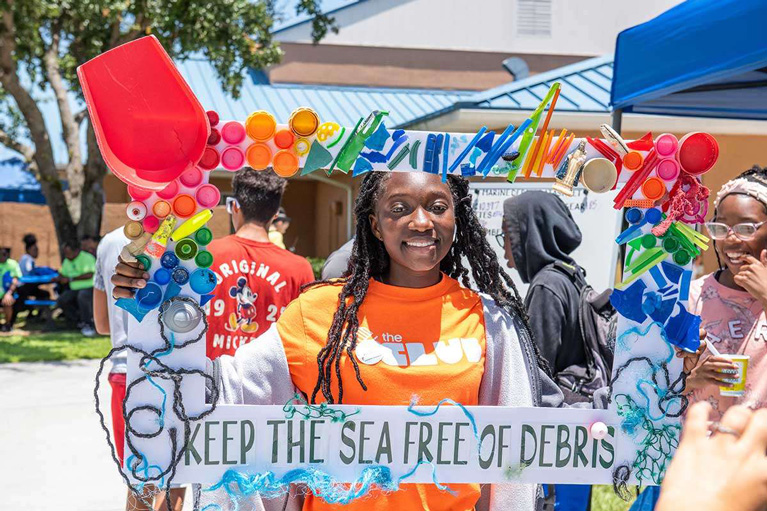 Image courtesy of Boys & Girls Clubs of St. Lucie County.
Image courtesy of Boys & Girls Clubs of St. Lucie County.Use Art as Activism
Sometimes seeing is believing, which makes art a valuable tool for helping communities literally see (and better understand) the issue you’re solving for.
As part of an ocean advocacy summer program, Florida teens at Boys & Girls Clubs of St. Lucie County not only collected over 1,500 pounds of trash from local beaches but transformed the trash into six ocean-themed art pieces now on display throughout the county.
 Image courtesy of Boys & Girls Clubs of West San Gabriel Valley & Eastside.
Image courtesy of Boys & Girls Clubs of West San Gabriel Valley & Eastside. Organize a March or Rally
One of the best ways to draw attention to an issue and generate support is to bring people together for an engaging community event.
After their Boys & Girls Club’s rainbow flag was stolen, teens partnered with their school district, city and police department to lead the very first Pride March in Monterey Park, California. The now-annual march begins at the local high school, passes City Hall and ends at the community park across from Boys & Girls Clubs of West San Gabriel Valley & Eastside, finishing with a festival of live music, food and celebration. Nearly 500 young people and adults have attended in years past, joining together to show their support for inclusive environments and LGBTQ+ youth and community members.
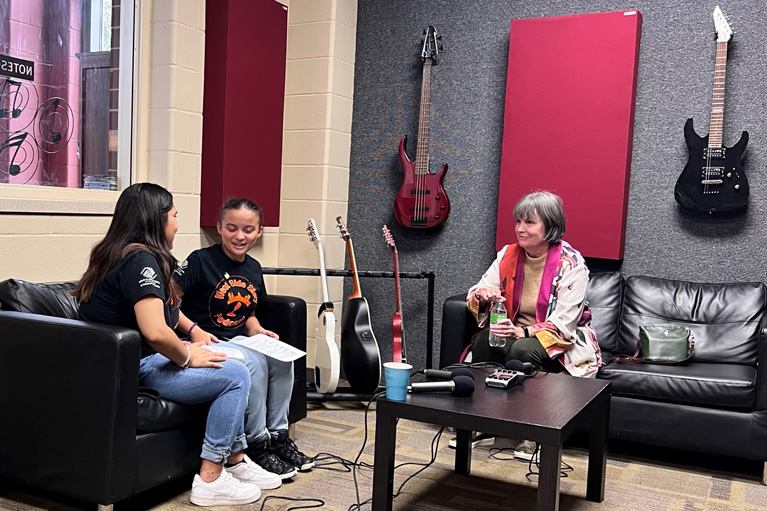 Image courtesy of Boys & Girls Clubs of the Twin Cities.
Image courtesy of Boys & Girls Clubs of the Twin Cities.Raise Teen Voices
While activism often appears as in-person rallies and marches, tapping into digital media — including social media and podcasts — is another avenue to make teen activists’ voices heard.
To give their peers a space to discuss issues that matter to them, teens from Boys & Girls Clubs of the Twin Cities in Minnesota developed the “Our West Side Story” podcast, with young people sharing their opinions and experiences on topics like work-life balance, mental health and important safety policies. The podcast won a $5,000 grand prize in a Boys & Girls Clubs of America “Shark Tank”-style competition for youth advocacy projects, and their inaugural episode featured an interview with U.S. Congresswoman Betty McCollum.
Young people don’t have to wait until they grow up to make an impact.
Whether they’re challenging world leaders to fight climate change like Swedish activist Greta Thunberg or leading American Sign Language classes to promote inclusion for kids with hearing loss like Club kid Joecelyn of Boys & Girls Clubs of Greater Anaheim-Cypress, teen activists have the power to be the change they want to see.
Learn more about how Boys & Girls Clubs teach skills and create opportunities for young people to get involved in youth activism.
Join the Club
Boys & Girls Clubs help millions of young people each year develop the skills to stand up for what they think is right and elevate their voices. Learn how to get involved with Boys & Girls Clubs of America.